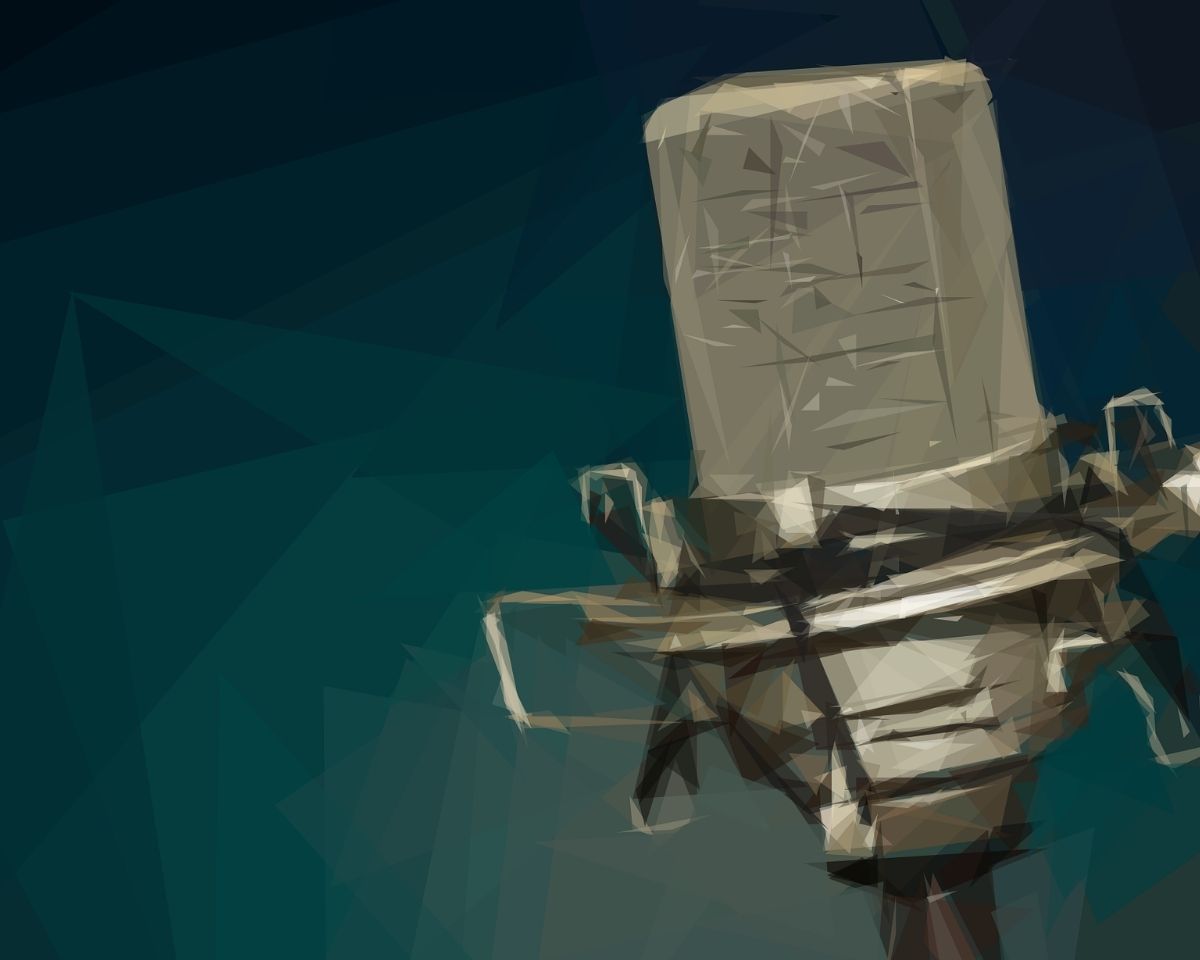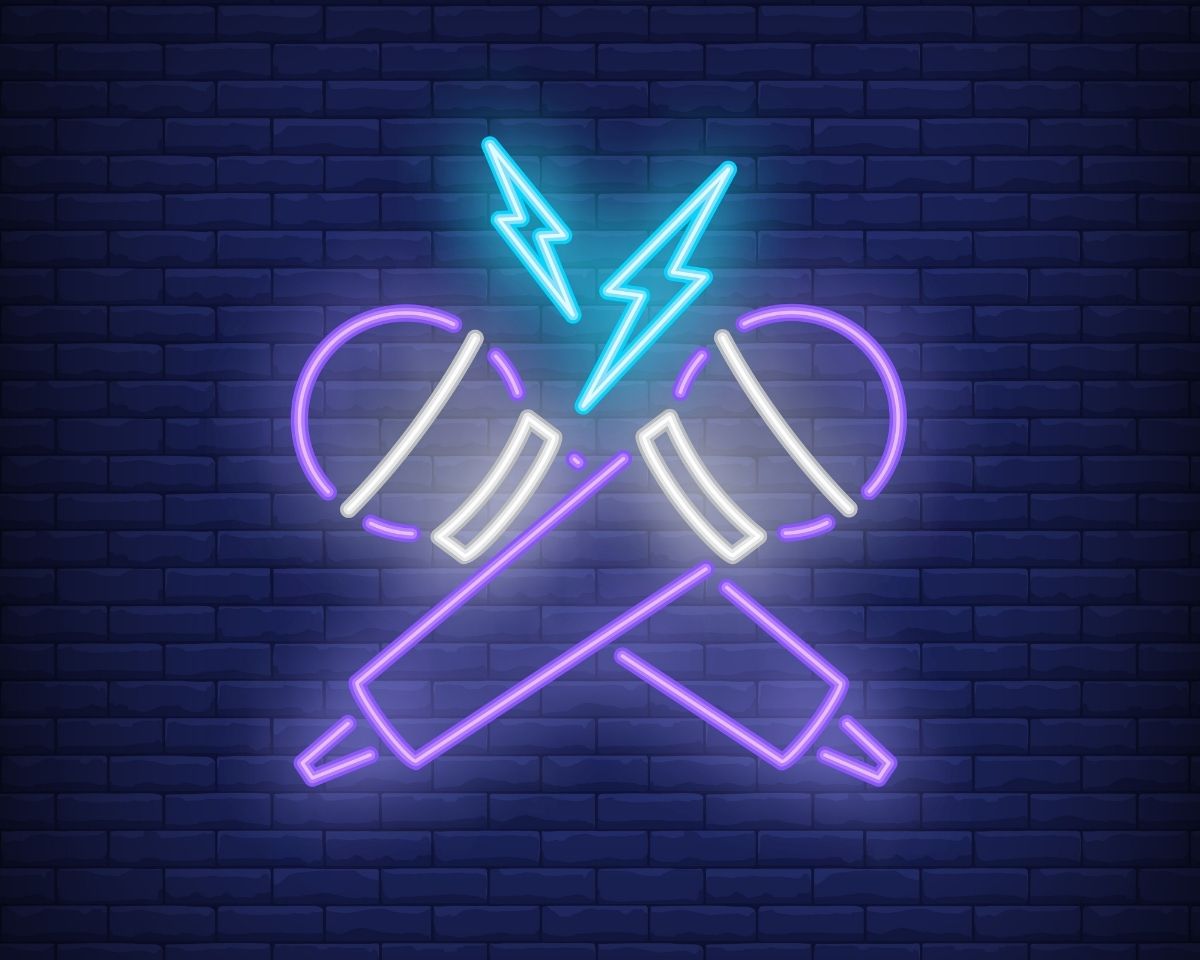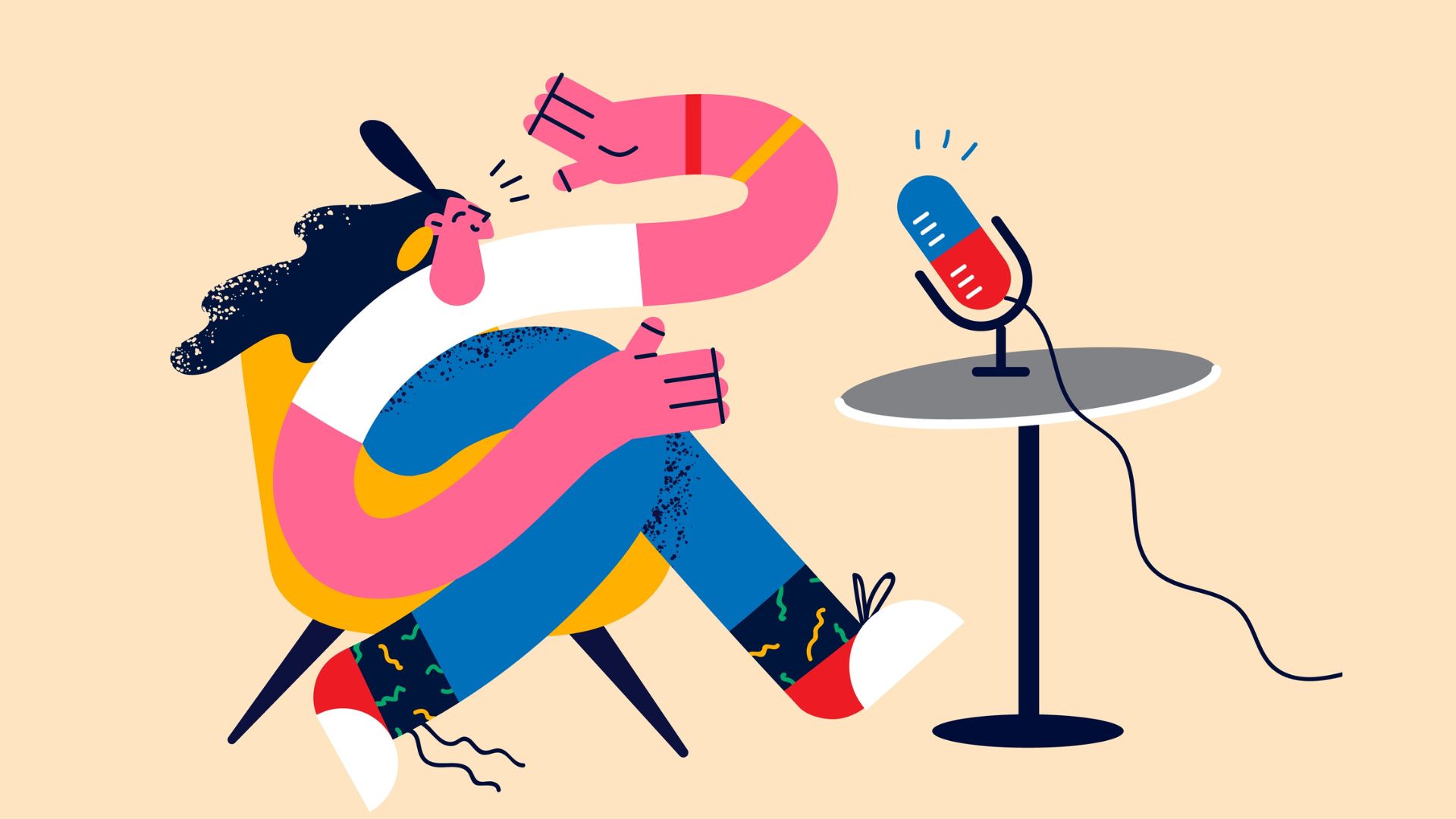Sound good on a budget (without turning your lounge room into a studio)
If you’re recording at home and your room sounds like a cave, you don’t need to spend a fortune to fix it.
With a few smart tweaks and a light touch of AI, you can reduce echo, cut reverb and get your show sounding professional without gluing a bunch of ugly foam panels to every wall.
Want help starting your podcast? Download my FREE ‘How To Start A Podcast’ guide.
Start with the room: soft beats hard
Hard surfaces bounce sound.
Soft surfaces absorb it.
And if you want to simplify how you think about recording at home, that’s really all you need to know.
If you want to improve your space for audio there are a few really simple things you can do…
- Choose a smaller room rather than a bigger one (smaller means less echo)
- Put a rug under your set up so you’re not recording on bare floors
- Close your curtains or blinds (the heavier the better)
- Record near soft furnishings like your couch, cushions, doona
- Turn off anything that makes noise (air conditioner, fans, whirring hard drives etc) and try to record when the house/neighbours are quiet (not always achievable, I know…thank you Mr Neighbourhood Leaf Blower)
- Sit as close to your mic as possible (the closer you are the less room noise your mic will pick up)
You’re not aiming for studio quality, you’re aiming for “not echoey.”
Think about your audio when you’re recording it
Capturing high-quality audio at the time of recording will always be easier than trying to fix things in post.
That’s why it’s important to wear headphones while you’re recording, so you can make small tweaks in the moment rather than finding out you’ve got audio issues when you sit down to edit.
Use AI (lightly)
Tools like Adobe Enhance can clean up room noise and echo but be warned, it is VERY easy to over use these tools if you don’t know what you’re listening for.
Strip too much of the background out and you’ll also strip most of the elements of your voice that make you sound human (and not like a robot).
Start slowly, use your ear and if the audio doesn’t sound natural then you’ve gone too far.
And don’t rely on AI to fix a terrible recording space, think about where you’re recording and make tweaks in the moment so you’re giving it something decent to work with.
Bottom line
Basically you want to do as much as you can in the room so the audio is as good as it can be, then use a touch of AI to finish the job.
That combination will get you to where you need to be without having to spend a lot of money or renting a studio.
It’s also a great idea to test audio wherever you record so you can make adjustments or choose another space before you press go for real.
🎙️ Want to start a podcast but feeling overwhelmed?
Grab my free “How To Start A Podcast” guide or get step-by-step support inside my online course, PodSchool.
Got a question about podcasting? Send it my way so I can answer it on the podcast!










